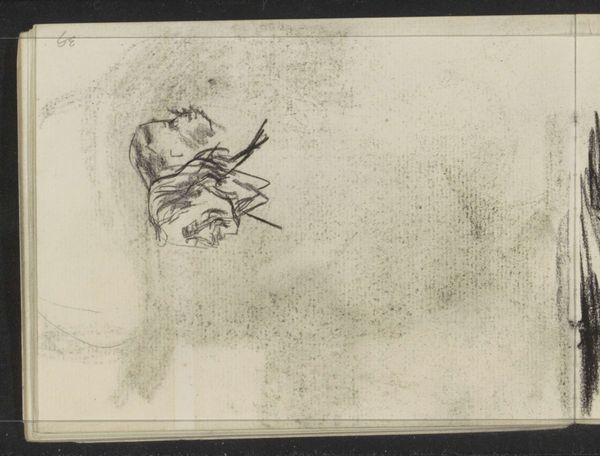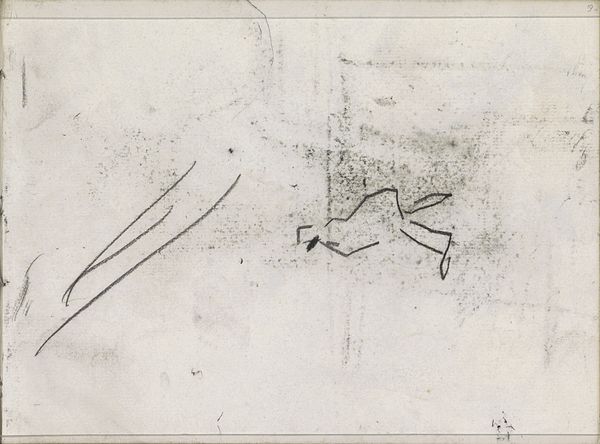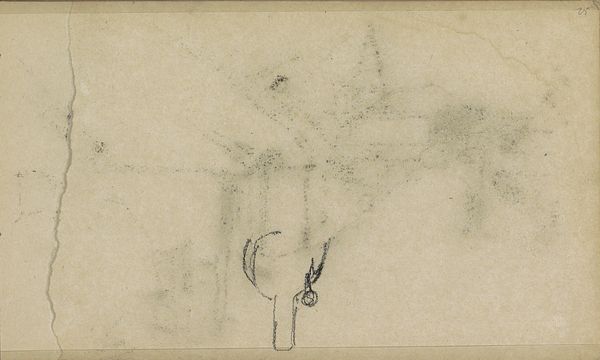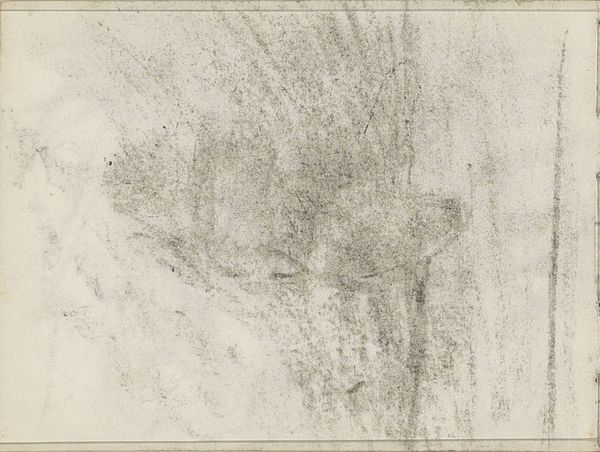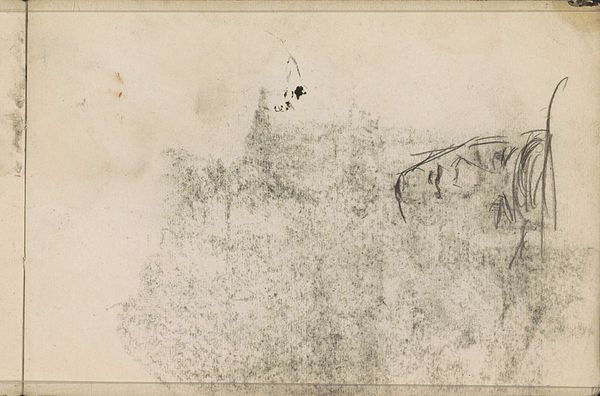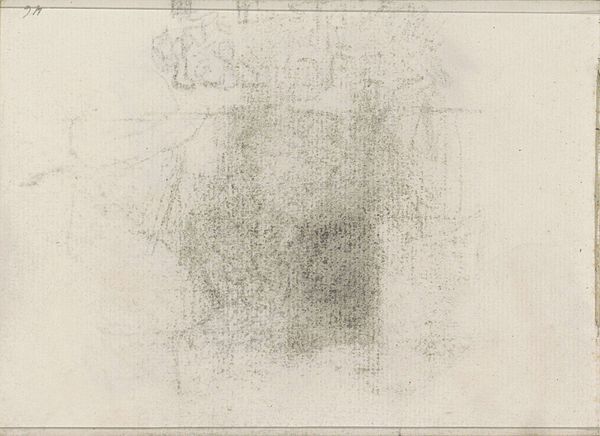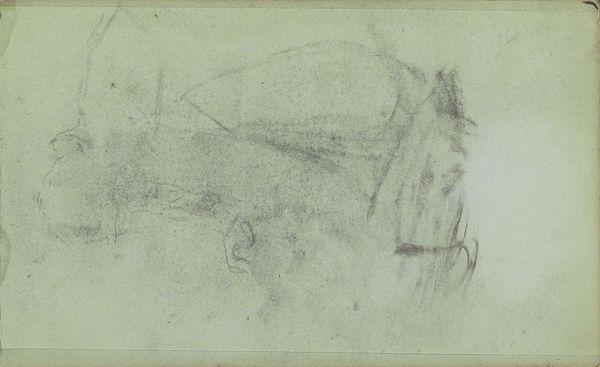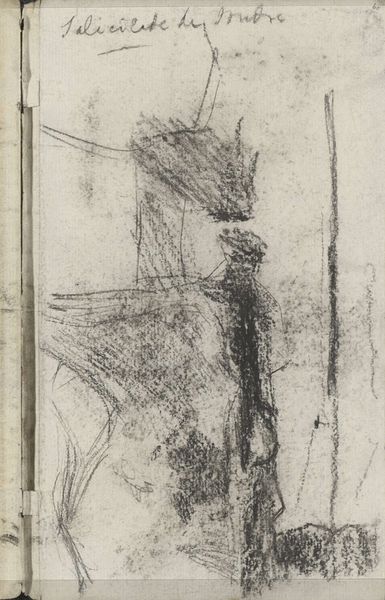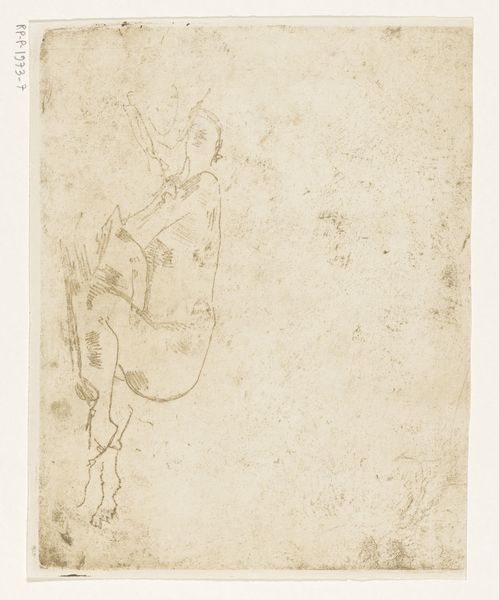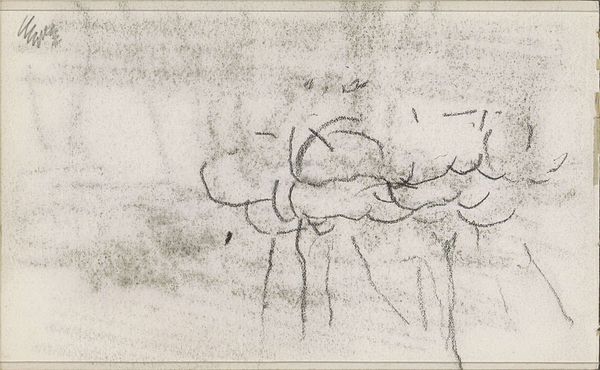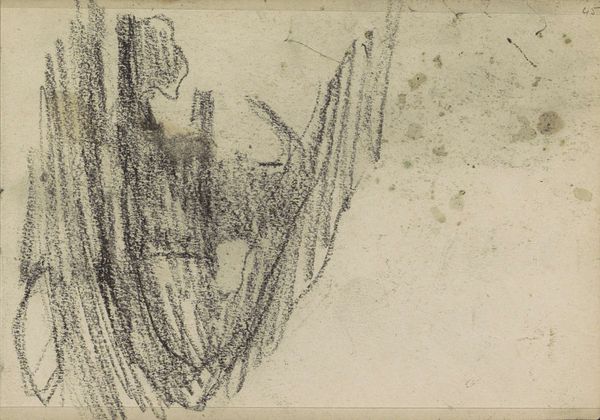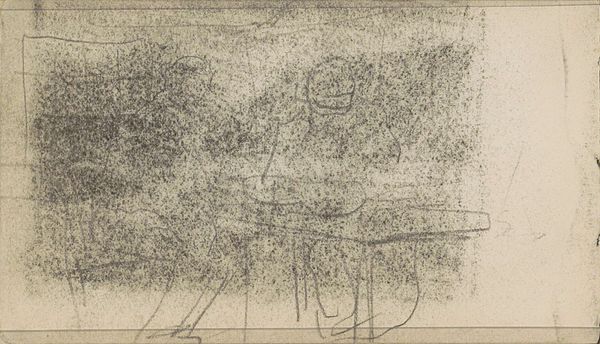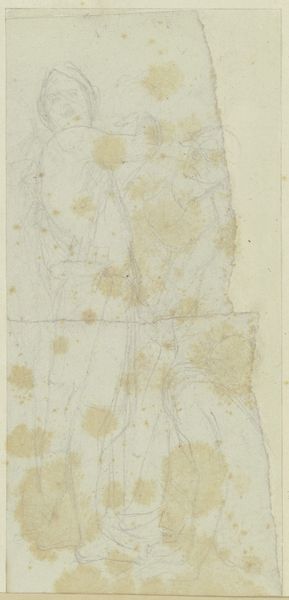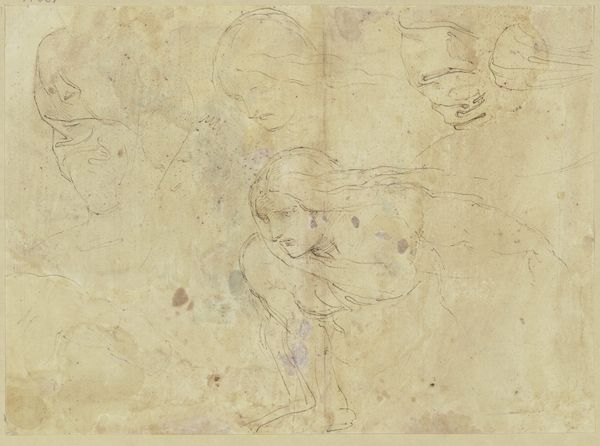
#
amateur sketch
#
toned paper
#
light pencil work
#
pencil sketch
#
incomplete sketchy
#
underpainting
#
detailed observational sketch
#
sketchbook art
#
watercolor
#
profile
#
initial sketch
Copyright: Rijks Museum: Open Domain
Curator: Before us, we see "Vrouwenhoofd met hoed, in profiel," or "Head of a Woman with Hat, in Profile" by Isaac Israels, likely created sometime between 1875 and 1934. Editor: It's interesting how fleeting the image feels, a kind of captured moment on aged paper. I wonder, was this just a practice piece or a study for something larger? Curator: Its very sketchy nature, made with light pencil work and some watercolor, does suggest an initial study. These kinds of works offered artists an intimate and less formal method to capture the essence of their subjects. Looking at Israels' biography, we might consider the role women played in Dutch society during his lifetime and what this portrait signifies. Editor: I see it more as an early observation of an everyday person, rather than necessarily carrying the weight of representation. Isreal was part of the Amsterdam Impressionism movement, who were really pushing to present a view on modern daily life, especially the lives of women and the working class, rather than focusing on historical representation. The artist has paid attention to details such as the hat to really draw the viewer in. Curator: Precisely, this work speaks to that shift toward observing modern life and offers insight into how representation intersects with identity and societal roles. Editor: Right, the loose sketch style seems fitting, especially for what seems like it might be a quick character study. Curator: The informality, though, should be considered in relation to artistic institutions of the time. How were women, particularly women in contemporary clothing like that elaborate hat, being depicted and by whom? The sketchbook origins point to this possibly being outside formal exhibitions, but how does that shape its political impact, if any? Editor: Interesting questions. What strikes me about this piece in its current location in the Rijksmuseum is the presentation; framing and display can alter the meaning behind such an informal piece, adding value through context, giving it a role of artistic importance as an item within a national collection. Curator: I agree. Considering its journey from a private sketchbook to a national institution highlights the ongoing negotiation of artistic and cultural values. Thanks for illuminating these important aspects. Editor: Likewise. The dialogue reminds us how looking closely can unearth layers of meaning in seemingly simple sketches.
Comments
No comments
Be the first to comment and join the conversation on the ultimate creative platform.
